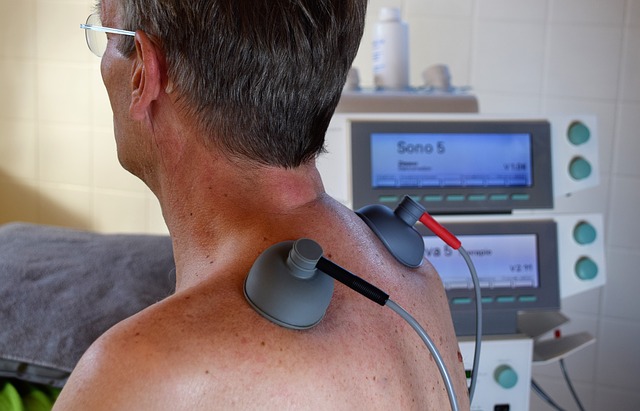Similar to medical coding, medical billing process might seem complicated and large, but in reality, it’s a process that includes eight simple steps.
These steps are:
- Registration.
- The setting of financial responsibility for the visit.
- Check-in and check-out of the patient.
- Ensuring coding and billing compliance.
- Preparing and sending claims.
- Monitoring payer adjudication.
- Generating a patient bill or statement.
- Assigning patient payments and arranging collections.
Remember that medical billing also includes “front-of-house” and “back-of-house” duties.
Article Table of Contents
Register Patients
When a patient makes an appointment with a healthcare provider, they basically preregister for the doctor’s visit.
If they visited the provider before, their information is saved on the provider’s file, and all the patient has to explain is the reason for the visit.
New patients, however, have to provide insurance and personal information to ensure they can receive services from the provider.
Confirm Financial Responsibility
Financial responsibility means who owes what for a doctor’s visit.
When the biller has the appropriate information from the patient, they can determine which services the insurance plan of the patient covers and which not.
Depending on a company, individual, and plan, insurance coverage can greatly differ.
So the billers should check the coverage of every patient to make the bill correct.
Some insurance plans don’t cover particular medications or services.
If the insurance doesn’t cover a procedure or service, the biller should inform the patient that they will cover the bill.
Patient Check-in and Check-out
The check-in and check-out of patients are relatively straightforward procedures of front-of-house.
When patients visit, they have to fill in some forms, if it’s the first visit, or to confirm their information if that’s one of many visits.
They also have to provide some identification, such as a driver’s license, together with a valid insurance card.
The office of the provider also collects copayments during the check-in and check-out of the patient.
They are always collected at this point, but it’s up to the provider to decide if the patient has to pay the copay before the visit or after.
After the check-out of the patient, the provider’s office sends the report of the patient’s visit to a medical coder who translates the information into accurate medical codes.
The report usually includes information on the patient’s medical history and demographic.
This is called “superbill”.
The superbill has all the information about the provided service.
It includes the provider’s name, the physician’s name, the patient’s name, services and procedures performed, diagnosis and procedure codes, and other medical information.
All this data is essential to create a claim.
Then, the superbill is transferred to the medical biller, usually through some software.
Prepare Claims/Check Compliance
The medical biller uses the superbill they received from the medical coder and makes either a paper claim form or the electronic one through billing or proper practice management software.
They also include the cost of performed procedures in the claim.
However, they don’t send the full cost to the payer, but only the amount they are expected to pay as per the payer’s contract with the provider and the patient.
Once the medical claim is created, the medical biller should ensure that it meets the standards of compliance for format and coding.
The accuracy of coding is usually left up to the coder, but the biller also reviews the codes to ensure that the coded procedures are billable.
This is determined by the patient’s insurance plan and the regulations made by the payer.
Claims may be created in different formats, but they normally contain the same information.
Each claim includes information about the patient (demographic and medical history) and what procedures were performed (coded by CPT or HCPCS codes).
Every procedure comes along with a diagnosis code (ICD) that justifies the medical necessity.
The claim also contains the price for procedures and the information about the provider (via NPI – National Provider Index – number).
Billers should ensure that the claim meets the billing compliance standards.
They must follow the HIPAA and OIG guidelines.
(The HIPAA stands for the Health Insurance Portability and Accountability Act, and the OIG stands for the Office of the Inspector General).
The OIG standards are relatively straightforward but can be lengthy.
Some claims also contain a Place of Service code, which describes the type of medical facility.
Transmit Claims
Since the HIPAA of 1996, all health entities that the HIPAA covers should submit their claims electronically, except for some special cases.
HIPAA covers most providers, payers, and clearinghouses.
Physicians aren’t required by the HIPAA to do all transactions electronically.
Only the standard transactions that the HIPAA guidelines list must be completed electronically.
Claims are one of them.
Manual claims may still be in use, but this process has many disadvantages.
Manual claims may contain multiple errors, have a low level of efficiency, and take longer to get from providers to payers.
Electronic billing saves a lot of time, money, and effort, and reduces the rate of human or administrative errors by a lot.
When working with high-volume third-party payers, such as Medicaid or Medicare, the claim can be submitted directly to the payer.
However, if the claim isn’t submitted directly, it will likely go through a clearinghouse.
A clearinghouse is a third-party company or organization that receives and reformats a claim and transmits it to the payer.
Some payers require a very specific form of a claim.
Clearinghouses ease the tasks for medical billers by taking the information required for a claim and formatting it appropriately.
It can be described like so: the provider may send ten claims to ten different insurers, and each of them has its own guidelines for the claim submission.
Instead of formatting every claim, billers can send the necessary information to a clearinghouse.
They, in turn, will do the reformatting of all ten claims.
Monitor Adjudication
Once the payer receives a claim, it goes through the adjudication process.
It means that the payer evaluates the claim and decides whether it’s compliant and valid.
If it is, they decide how much the payer will compensate the provider for.
At this stage, the claim can be accepted, rejected, or denied.
An accepted claim is, of course, the one that was found valid by the payer.
It doesn’t necessarily mean that the entire bill will be reimbursed.
The claim will be processed under the arrangement they have with their subscriber (the patient).
A rejected claim is the one in which the payer found an error.
If some important patient information is missing, or diagnosis or procedure was miscoded, the claim is rejected and returned to the biller or provider.
Rejected claims can be corrected and resubmitted.
A denied claim is the one when the payer refuses to process the payment for the provided services.
It can take place if a provider is billing for a procedure that is not covered by a patient’s insurance.
It can be a procedure for a pre-existing condition if the insurance doesn’t cover a procedure like this.
Once the adjudication process is complete, the payer sends a report to the biller or provider.
It includes the details of what and how much will be compensated for and why.
The report lists the procedures that will be covered, and the amount that will be paid for each procedure.
It can often be different from the fees included in the initial claim.
The payer typically has a contract with the provider that includes the fees and reimbursement rates for various procedures.
The report will also include explanations of why the procedures won’t be covered.
If the patient has an additional insurance plan, the biller can take the amount left after the primary insurance provides the approved claim and send it to the secondary insurer of the patient.
The biller has to review the report to ensure that all procedures listed on the initial claim are considered in the report.
They will also check the codes to ensure they match the codes listed on the initial claim.
Also, the biller has to ensure that the fees stated in the report are accurate regarding the contract between the provider and payer.
If any errors are found, the biller or provider will undergo the appeal process with the payer.
It is a complicated process that depends on the rules specific to payers and the states where the provider is located.
Virtually, the claims appeal process means the attempt of the provider to secure the appropriate reimbursement for the services.
This process can be long and difficult, so billers must create an accurate and clean claim in the first place.
Generate Patient Statements
After the biller received the payer’s report, they create a statement for the patient.
This is the bill for the procedures received from the provider.
After the payer agreed to pay for certain services on the claim, the patient is responsible for the remaining amount.
In some cases, billers include an Explanation of Benefits with the statement.
It describes the benefits (therefore, the type of coverage) the patient will receive under the plan they got.
It can be useful to explain to patients why particular procedures were covered, and why some were not.
Follow Up on Patient Payments and Handle Collections
The last stage of the billing process includes ensuring that the bills are paid.
Billers should mail accurate and timely medical bills and then follow up with patients whose bills are overdue.
When the bill is paid, the information on it is saved in the patient’s file.
If the patient is overdue with their bill, or if they don’t cover the entire amount, the biller is responsible for ensuring that the provider is compensated for their services.
For that, they may have to contact the patient directly, send follow-up bills, or enlist a collection agency, which is the worst-case scenario.
The guidelines and timelines for the bill payment, notifications, and collections vary from one provider to another.
So you will have to check with the billing standards of the provider before getting involved in these activities.
Read the full guide: How to Become a Medical Biller and Coder




